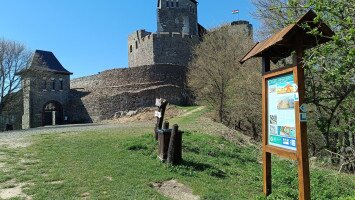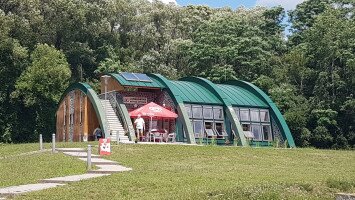
Natural area of local importance.
How to get there
Leaving Tar, continuing from the Csevice springs you can reach the Tuzson Arboretum, which is about 4 hectares in size, on the yellow sign.
History
The founder of the tree collection is dr. János Tuzson, a university professor who created the collection for experimental purposes. In his research, he mainly dealt with the histology, phytogeography and ancestry of woody plants. He was the first to perform histological comparative studies on the silicified tree trunk of the Ipolytarnoc pine (the tree trunk was named Pinus tarnociensis by definition). He was also involved in seedling and plant breeding, as well as planting herbs. He experimented mainly with the cultivation of woolly foxglove (Digitalis lanata) and common foxglove (Digitalis purpurea). Along the roads, the rose stalks that still occur today are reminiscent of attempts to extract rose oil. He bought the forest estate of Fenyvespuszta in 1925 and chose the bank of the stream as the location of the collection. In 1927-1928 he was primarily engaged in the planting and propagation of evergreens in the area formed by deforestation and breaking up the soil. He brought exotic species from distant lands with an earth ball around their roots in wire baskets. After the Second World War, the area became the property of forestry, which, by connecting different groups of trees, was engaged in growing seedlings in the areas between them. The arboretum is currently managed by Egererdő Rt., a forest school has been established in the area of the former Fenyvespuszta and the area hosts several community events. Flora Spruce (Picea abies), larch fir (Larix decidua), Scots pine (Pinus sylvestris), Lawson cypress (Chamaecyparis lawsoniana) and northern red oak (Quercus rubra) seedlings were grown here. In 1970, seedling cultivation was completely abolished, and the liberated plots were planted with sweet chestnuts (Castanea sativa) and silver fir (Abies alba) in addition to the species mentioned above. Of the remaining tree species, the nearly 70-year-old Atlas cedar (Cedrus atlantica) with a trunk circumference of 300 cm, from which a larger branch was split a few years ago. The Balsam fir (Abies balsamea), white fir (Abies concolor), Caucasian fir (Abies nordmaniana), mountain pine (Pinus montana), Lawson cypress (Chamaecyparis lawsoniana), Rocky Mountain Douglas-fir (Pseudotsuga menziesii var. caesia) and Douglas fir (Pseudotsuga menziesii) and several specimens of smooth Japanese-maple (Acer palmatum). Permanent entry, free opening hours.















